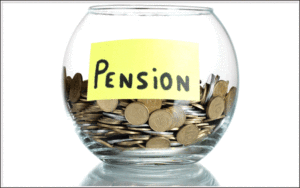 If you’re an active member in a defined benefit pension plan, such as the one offered by HOOPP (Healthcare of Ontario Pension Plan), pretty soon it will be that time of a year when you receive your annual pension statement of benefits. Your annual statement is like a snapshot of your pension benefits. It shows how much you’ve accrued up to the end of the calendar year. Here are some things to watch for on your annual statement.
If you’re an active member in a defined benefit pension plan, such as the one offered by HOOPP (Healthcare of Ontario Pension Plan), pretty soon it will be that time of a year when you receive your annual pension statement of benefits. Your annual statement is like a snapshot of your pension benefits. It shows how much you’ve accrued up to the end of the calendar year. Here are some things to watch for on your annual statement.
1. Your Personal Information
On your annual pension statement, you’ll find your basic personal information. It includes important information to your defined benefit pension plan, including your date of birth, date of plan entry and credited service. Review this information carefully. The value of your defined benefit pension is based on this. You’ll want to watch the credited service and earnings carefully. Your credited service should go up by a year versus last year’s statement if you’re a full-time employee and worked the entire year. If any corrections are needed, you should let your plan administrator know right away.
2. Your Spouse and Beneficiaries
Your spouse and beneficiary information is also something you’ll want to make sure is up to date. If a major life change recently occurred (marriage, divorce, or the birth of a child), more than likely you’ll want to update your spouse and beneficiary information to reflect that. You can do this by requesting a spousal declaration and beneficiary form from your plan administrator. Having this information updated is crucial. If you were to suddenly pass away, you’ll want to make sure that the pension death benefit is paid to who you want it to go to.
3. Retirement Dates
There are three important retirement dates you’ll want to keep an eye out for on your pension statement. The first is your earliest retirement date (the soonest you can start drawing a monthly pension on a reduced basis), your earliest unreduced retirement date (the soonest you can start drawing a monthly pension in full without reduction) and your normal retirement date (age 65 in most cases). You’ll want to consider these dates carefully when deciding to retire. If you’re considering retirement, it’s a good idea to ask for a retirement estimate to see what your monthly pension amounts will be before handing in your resignation.
4. Your Annual Pension
This is the number that most are looking for when they first review their annual pension statement. This is the amount of pension you’re eligible to start collecting at your normal retirement date and earliest unreduced retirement date. Some pension statements show it as monthly, while others show it as annual. Your pension statement may also have a projected pension amount assuming you stay actively employed until retirement. You’ll want to take last year’s annual statement out of the filing cabinet and compare it to this year’s one. Your annual pension should go up in almost all cases. If it doesn’t, you may want to call your plan administrator for a further explanation.
Sean Cooper is the bestselling author of the book, Burn Your Mortgage: The Simple, Powerful Path to Financial Freedom for Canadians, available now on Amazon and at Chapters, Indigo and major bookstores, and as an Audiobook on Amazon, Audible and iTunes.
Well written & very informative article.
Keep up the good work Sean.
Why is the estimated value of the pension for the year so much lower than the pension adjustment on the T-slip? It’s obvious they’re using different formulas for each, but why would you have a bigger PA than your pension actually cost to fund? It seems like a raw deal.
That’s why there’s the pension adjustment reversal (PAR for short). It compares your Pension Adjustment against your commuted value. If the PAs are too high, you get some of your RRSP room back.